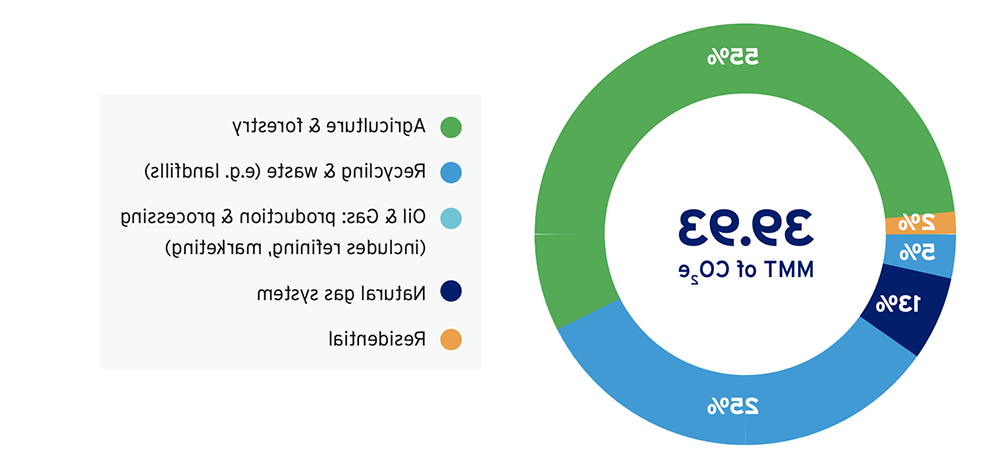At Sempra and across our 公司家族, we innovate to improve the potential of our energy systems, including 天然气. Natural gas infrastructure can support a more continuous use of resources and reduce waste by repurposing methane emissions from the decomposition of organic matter in our waste streams.
According to the World Economic Forum, increased use of 可再生天然气 (RNG) could reinforce a 循环经济, one which promotes the reduction of waste and the continual safe use of natural resources — offering an energy alternative that could yield up to $4.5 trillion in economic benefits by 2030.
Transforming Methane and Reducing Emissions
With 21 times more global warming potential than carbon dioxide, methane is a potent greenhouse gas. It is being released directly into the atmosphere in large and increasing quantities, with agriculture and waste contributing 56% of anthropogenic (caused by human activity) emissions. 仅在加州, these sectors were responsible for over 75% of the methane emissions in the state, or approximately 30 million tonnes of CO2e in 2017.
This methane can be used to generate energy as RNG. Once processed to pipeline quality, the emissions from our waste streams can be used exactly the same way as conventional 天然气 and distributed using the existing 天然气 distribution 管道系统. At scale, this would prevent the release of hundreds of millions of tons of methane emissions.
California Air Resources Board 2017 Methane Inventory

data source: California Air Resources Board
Renewable Natural Gas and the Energy Transition
RNG is playing an increasingly important role in the 能源过渡. 在加州, a 2016 law (SB 1383) requires a 40% reduction in methane emissions below 2013 levels from waste sources such as landfills and dairies, with provisions to deliver that energy to consumers.
同样在加州, SB 1440, 2018年通过, requires the California Public Utilities Commission (CPUC) to consider adopting RNG targets or goals for 天然气 utilities. Oregon recently enacted legislation allowing its 天然气 utilities to purchase RNG on behalf of its customers, with the goal of replacing 15% of traditional 天然气 with RNG by 2030. And Colorado and Hawaii are also considering legislation to reduce carbon emissions through the use of RNG.
The Potential of Renewable Natural Gas
In just 20 years, there could be enough RNG available in the U.S. to replace up to 90% of the nation’s current residential 天然气 consumption, according to a recent American Gas Foundation 研究 由ICF进行. Additionally, a January 2020 研究 by the Lawrence Livermore National Laboratory identified capturing and converting the methane emissions from waste biomass as part of the RNG process as one of three pathways that could allow California to physically remove 125 MMtCO2 (million metric tons of CO2) from the atmosphere per year. This is the amount that must be removed to achieve the state’s goal of carbon neutrality by 2045.
Companies including UPS, 菲多利, 史密斯菲尔德食品公司, and Williams Companies, as well as the University of California and other educational institutions, have also announced the use of the fuel to help achieve their carbon reduction goals. Industry group The Coalition for RNG lists 130 operational projects in the U.S., with 110 additional projects either under construction or substantial development. The public health and environmental benefits of replacing diesel with RNG as a transportation fuel are quite significant.
By working to harness the power of RNG, Sempra is helping shape the future of our energy industry.









